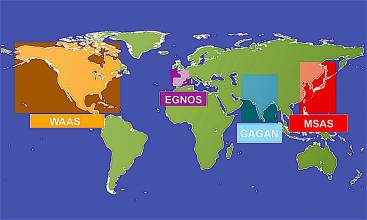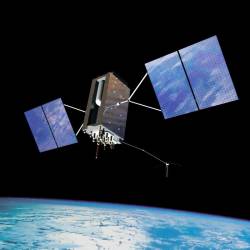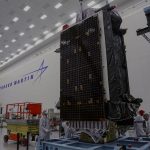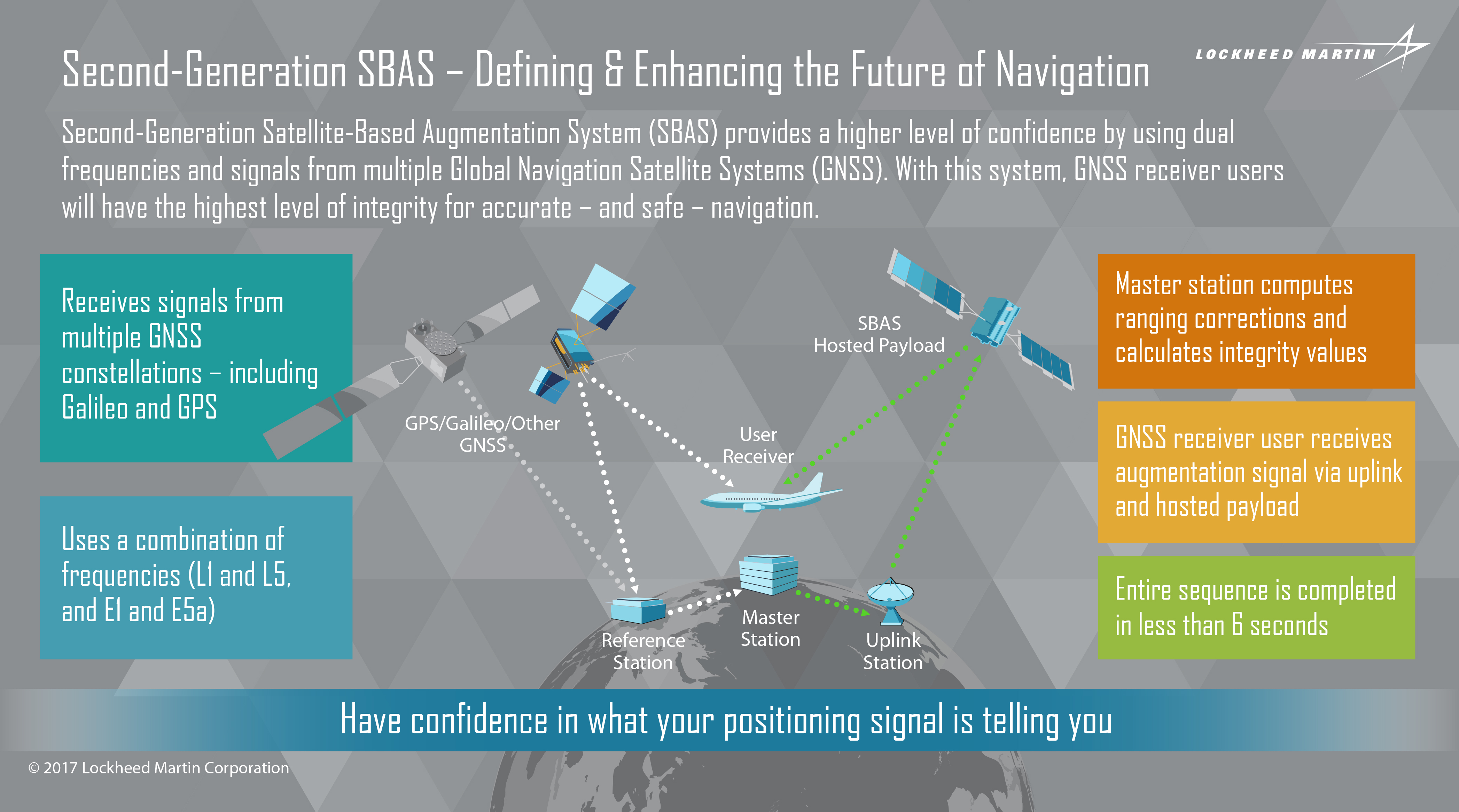Lockheed Martin announced that its second-generation satellite-based augmentation system (2nd Gen SBAS) testbed started broadcasting in dual frequency, multi-constellation (DFMC) during testing this week that was moved up from originally scheduled dates.
Early in 2017, Geoscience Australia, an agency of the Commonwealth of Australia, and Lockheed Martin announced they had entered into a collaborative research project to show how augmenting signals from multiple GNSS constellations can enhance positioning, navigation, and timing for a range of applications. GNSS signals are critical tools for industries requiring exact precision and high confidence, and this new testbed was designed to demonstrate enhanced navigation performance for nine critical industrial sectors in Australia. Since then Australia has also explored the use of the technology in medical applications, adding a tenth sector.
On the scheduled date of June 1, the program reached an initial milestone by broadcasting the L1 legacy SBAS, which broadcasts similar messages to what Wide Area Augmentation System (WAAS) and EGNOS are broadcasting, said Bob Jackson, Global SBAS Project Lead with Lockheed Martin.
Then came this week’s breakthrough.
“The next big milestone was going to be broadcasting for the first time of dual frequency multi-constellation SBAS using GPS L1/L5 and Galileo E1 and E5a,” Jackson told Inside GNSS on Sept. 21. “We actually overachieved and the first broadcast was earlier this week, so we’re pleased.”
Also, for the first time, Lockheed Martin says it’s broadcasting precise point positioning capability off an SBAS satellite, on both L1 and L5.
“Basically, whenever you’re running a program, sooner is better,” Jackson said. “You want to get as much information as you can as soon as you can. So, we’re quite pleased at how the team has worked very well together to accomplish this.”
Back in February, came news that the Australian Government will be collaborating with New Zealand on the project to improve positioning capability in the Australasia region. The two countries are working together to test instant, accurate and reliable positioning technology that could provide future safety, productivity, efficiency and environmental benefits across many industries in the region, including transport, agriculture, construction, and resource management.
Technology companies GMV, Inmarsat, and Lockheed Martin are all involved in the project. The companies have been involved in implementing SBAS technology around the world, and are handling the technical components of the testbed.
Ultimately, the second-generation SBAS testbed will broaden understanding of how this technology can benefit safety, productivity, efficiency and innovation in Australia’s industrial and research sectors. The two-year project has about another 15 months to demonstrate capabilities and provide data that can be used to determine future applications.
“The Australians have outlined a very ambitious and comprehensive set of demonstrations across nine or 10 industrial sectors, looking at the different potential applications for second-generation SBAS,” Jackson said.
“Our objective is to be able to demonstrate the capability and support different industries as they evaluate that capability. All of that will roll into a larger assessment of the benefits.”
Jackson said the signals will become even more robust once additional satellites are added to the GPS and Galileo constellations in the near future. The Air Force will be launching GPS IIIs beginning in 2018, and several more Galileo launches are scheduled for next year.
“We’re excited to be at the forefront of demonstrating the advantages of dual-frequency multi-constellation, and it’s important to note that we are working with two partial constellations,” Jackson said. “The availability is not as robust as it will be in two or three years.”
Lockheed Martin has a contract to make 10 of those planned GPS III satellites.
“A Lockheed Martin uplink antenna at Uralla, New South Wales will send these augmentation messages to an SBAS payload hosted aboard a geostationary Earth orbit satellite, owned by Inmarsat,” explained Rod Drury, director, international strategy and business development for Lockheed Martin Space Systems Company, in a press release earlier this year. “This satellite rebroadcasts the augmentation messages containing corrections and integrity data to the end users. The whole process takes less than six seconds.”
By augmenting signals from multiple GNSS constellations – both Galileo and GPS – second-generation SBAS is not dependent on just one GNSS. They now use signals on two frequencies – the L1 and L5 GPS signals, and their companion E1 and E5a Galileo signals – to provide integrity data and enhanced accuracy for industries that need it the most.
Lockheed Martin is providing systems integration expertise in addition to the Uralla radio frequency uplink. GMV-Spain provides their “magicGNSS” processors, while Inmarsat has provided the navigation payload hosted on the 4F1 geostationary satellite. The Australia and New Zealand Cooperative Research Centre for Spatial Information is coordinating the demonstrator projects that test the SBAS infrastructure.
Both Lockheed Martin (Booth C) and GVM (Booth 508) will be at ION GNSS+ in Portland, Sept. 25-29, and Jackson said they will have monitors showcasing the DFMC.





